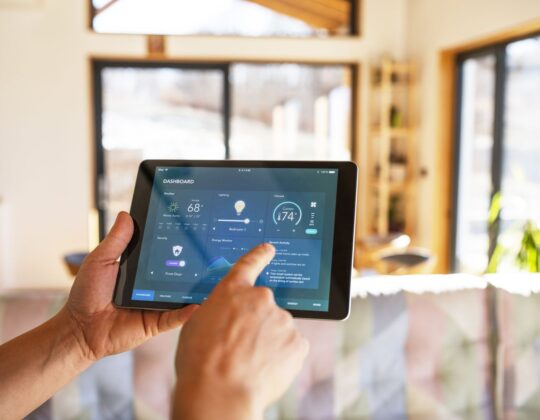In the fast-paced and digitally interconnected world we live in, achieving and maintaining a healthy work-life balance has become a paramount concern. The rise of remote work, accelerated by technological advancements, has blurred the lines between professional and personal life, making it challenging for individuals to disconnect and recharge. In this comprehensive guide, we will explore the best practices for cultivating a harmonious work-life balance while working from home, empowering you to navigate the demands of your career without compromising your well-being.
1. Establish Clear Boundaries: One of the key challenges of working from home is the lack of physical separation between the office and living spaces. To counteract this, set clear boundaries for your work hours and dedicated workspace. Define a specific start and end time for your workday, and create a designated area where you can focus on professional tasks. This separation helps create a psychological distinction between work and personal life.
2. Create a Dedicated Workspace: Designate a specific area in your home as your workspace. Ideally, this space should be separate from your living or sleeping areas to minimize distractions. Invest in comfortable and ergonomic furniture, ensuring that your workspace is conducive to productivity. A dedicated and organized workspace can enhance focus and signal to others in your household that you are in work mode.
3. Define a Structured Routine: Establishing a structured daily routine can bring stability and predictability to your work-from-home experience. Plan your day with a clear schedule that includes designated work hours, breaks, and personal time. This routine helps maintain a sense of order and control, reducing stress and allowing you to transition seamlessly between work and personal life.
4. Set Realistic Goals and Prioritize: Establish realistic and achievable goals for your workday. Prioritize tasks based on urgency and importance, focusing on high-priority items during peak energy hours. Setting realistic expectations prevents burnout and ensures that you can accomplish your key objectives without sacrificing your personal time.
5. Take Regular Breaks: Breaks are essential for maintaining focus, creativity, and overall well-being. Incorporate short breaks throughout your workday to stretch, hydrate, or engage in quick mindfulness exercises. Stepping away from your workspace periodically helps prevent mental fatigue and contributes to sustained productivity.
6. Communicate Effectively with Your Team: Open and transparent communication is crucial when working remotely. Establish clear channels of communication with your team to stay connected and informed. Regular check-ins, virtual meetings, and collaborative tools can foster a sense of camaraderie and ensure that everyone is on the same page, reducing feelings of isolation.
7. Learn to Say No: It’s important to recognize and respect your limits. Learn to say no to additional tasks or commitments when your plate is already full. Setting boundaries and managing expectations, both with colleagues and yourself, prevents overcommitment and allows you to maintain a healthy balance between professional and personal obligations.
8. Prioritize Self-Care: Prioritize self-care as an integral part of your routine. Incorporate activities that promote physical and mental well-being, such as regular exercise, adequate sleep, and mindfulness practices. Taking care of yourself is not a luxury but a necessity for sustained productivity and a balanced life.
9. Establish a Clear Sign-Off Ritual: Signal the end of your workday with a clear sign-off ritual. This could be a simple routine like shutting down your computer, turning off work-related notifications, or even a symbolic action like closing the door to your home office. Establishing a ritual helps create a mental separation between work and personal time, aiding in relaxation and unwinding.
10. Set Digital Boundaries: In a digital age, constant connectivity can lead to work encroaching on personal time. Set boundaries for digital communication, such as turning off work-related notifications during non-work hours. Establish clear expectations with your team about response times, allowing you to disconnect without feeling the pressure to be constantly available.
11. Schedule Personal Time: Treat personal time with the same level of importance as work commitments. Schedule dedicated slots in your calendar for personal activities, hobbies, and relaxation. Just as you allocate time for meetings and tasks, prioritize moments for yourself, family, and friends.
12. Separate Work and Personal Devices: Whenever possible, use separate devices for work and personal activities. This differentiation helps create a mental boundary between professional and personal use, making it easier to disconnect from work when needed.
13. Embrace Flexibility: Embrace the flexibility that comes with remote work. Allow yourself the freedom to adapt your schedule to align with your natural energy rhythms. Flexibility can enhance your ability to manage both work and personal responsibilities effectively.
14. Seek Support and Connection: Working from home can sometimes lead to feelings of isolation. Actively seek support and maintain connections with colleagues, friends, and family. Engage in virtual social activities, participate in online communities, and foster a sense of connection to combat feelings of loneliness.
15. Reflect and Adjust: Regularly reflect on your work-life balance and assess whether it aligns with your values and priorities. If you find that certain aspects are causing stress or imbalance, be open to adjusting your approach. The ability to adapt and refine your strategies is essential for long-term well-being.
16. Unplug During Time Off: When taking time off, make a conscious effort to unplug completely. Avoid checking work emails or messages during vacations or days off. This intentional break allows you to recharge and return to work with renewed energy and focus.
17. Invest in Personal Development: Allocate time for personal development activities that align with your interests and goals. Whether it’s pursuing a hobby, taking an online course, or reading for pleasure, investing in personal growth contributes to a more fulfilling and balanced life.
18. Set Annual Leave Boundaries: Establish clear boundaries for annual leave by communicating your availability in advance. Ensure that colleagues and clients are aware of your time off, and resist the temptation to engage in work-related tasks during vacations.
19. Foster a Supportive Home Environment: Create a supportive home environment that accommodates both work and personal needs. Communicate with those in your household about your work hours, breaks, and the importance of uninterrupted focus during certain periods. A supportive home environment contributes significantly to a healthy work-life balance.
20. Regularly Reassess and Adapt: Work-life balance is dynamic and subject to change based on evolving circumstances. Regularly reassess your priorities, commitments, and overall well-being. Be open to adapting your strategies to ensure that your work and personal life remain in harmony.
In conclusion, maintaining a healthy work-life balance while working from home requires intentional effort, self-awareness, and a commitment to well-being. By implementing these best practices, you can create a sustainable and fulfilling routine that nurtures both your professional and personal aspirations. Striking the right balance not only enhances your job satisfaction but also contributes to overall life satisfaction, creating a holistic and harmonious approach to the demands of modern living.









